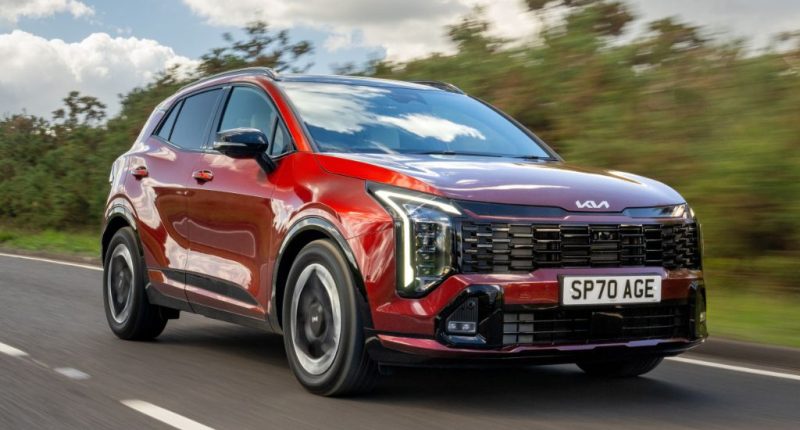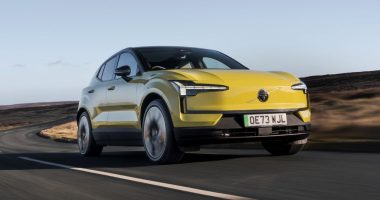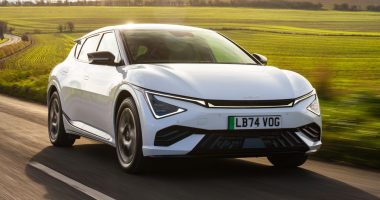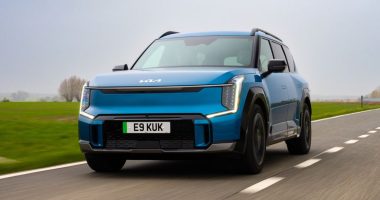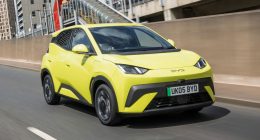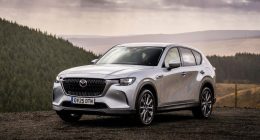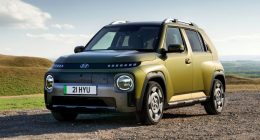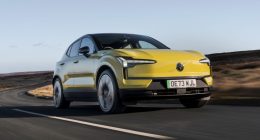No surprise for guessing that the best-selling car in Northern Ireland so far this year is a Sports Utility Vehicle. Even less surprising is that the honour goes to Kia’s Sportage.
Built in South Korea but designed and developed specifically for the European market, it has become an increasingly common sight on our roads since examples first started to roll off the back of transport lorries and onto the forecourts of local Kia dealerships.
The main takes from this Drive NI review of the new, fifth-generation Sportage comprise revised styling; fresh powertrains; and a refreshed cabin. Like other Kias, a stacked LED headlight with ‘Star Map’ DRLs replace the boomerang-style outline of its predecessor, the grille is bigger in scale, and the front bumper has been subtly altered, notably around the lower third where it is blockier and less angular. Unchanged is the side profile, though the front wings are different as is the side cladding and trim that runs beneath the doors.
Changes have also been applied at the rear, with sharp-eyed readers immediately drawn to the redesigned bumper and skid plate, and although the taillights’ shape is the same, the LED element is different from before; again, straight lines are the order of the day. To further distinguish the new from the old, alloy wheels measuring 17-inches to 19-inches depending on trim – ‘Pure’, ‘GT-Line’, and ‘GT-Line S’ – have all been given a once over. In all, there are seven body colours with ‘Magma Red’ and ‘Blue Flame’ two of our favourites.
Next on the main takes list is engines. As things stand, there is a pure petrol motor or a petrol-electric configuration to choose from. In the case of the former, the 1.6-litre can send 147bhp to the front axle via a six-speed manual or optional seven-speed dual-clutch transmission. As before, the self-shifting option is tardy at slower speeds and only shines once you move from urban to rural roads. Option two is a petrol-electric (HEV) that uses the same petrol engine but marries it to a 47.7kW electric motor that draws power from a 1.49kWh lithium-ion battery. Together, they develop 235bhp – an increase from 212bhp.
Completing the offering is a plug-in hybrid that promises up to 43-miles of pure electric driving from a single charge of the onboard 13.8 kWh lithium-ion battery. It can be charged using a Type Two connector, which allows for a full charge in under two hours via a 7.2kW public or home charger, or in under six hours using a standard three-pin domestic socket. Refinement levels inside the Sportage are strong and highlight why the hushed cabin, with its blend of plush non-woven microfibre suede called ‘Dinamica’, goes down so well.
Equipment on our mid-range ‘GT-Line’ was better than satisfactory, and included wireless phone charging, heated GT-Line embossed front sports seats, a heated steering wheel, front and rear air conditioning and no end of active safety gizmos from Highway Driving Assists, Intelligent Speed Limit Assist, Lane Keep Assist, Smart Cruise Control and Rear Occupant Alert.
During the facelift process, manufacturers tend to leave the dash area well alone – but as it continues to align current offerings with the latest EV3, EV4 and EV5, a different shaped, two-spoked steering wheel now features in the Sportage, along with subtly ‘hidden’ air vents that run from one side of the dash to the other, and a reworked centre console area that incorporates the drive dial, buttons to heat or cool the front seats, and another small section for the parking camera, parking sensors, engine auto stop/start, and auto hold.
As before, a big 12.3-inch touchscreen is fitted to all versions of the Sportage, with the second 12.3-inch instrument cluster on ‘GT-Line S’ variants incorporating a full TFT LCD. As for ‘Pure’ and ‘GT-Line’ versions, they must make do with a smaller – and rather cheap looking – 4.2-inch digital instrument cluster. At this price point, that is a shame, as is the fact the new 10-inch head-up driver display is also reserved for top specification models.
Little has changed in the way the Sportage rides and handles and the comprehensive use of sound deadening materials do a good job of supressing engine, wind and road noise to ensure a relaxing drive. The pure petrol does have to be worked hard if you have a full complement of people on board, yet it still delivers competitive economy; we achieved low-to-mid 40mpg on a 120-mile round trip. On the move, the Sportage is composed and stable and is blessed with a grippy front end and electrically assisted steering that loads up nicely as you quicken the pace. Drive modes can also be toggled between to alter the throttle response and gearbox where ‘Sport’ tends to hold onto each cog a fraction longer and causes the engine to sound – and feel – strained. Therefore, ‘Normal’ works just fine.
From previous experience, the 19-inch alloys tended to exacerbate the rough edges on nasty potholes; this is less noticeable when confronted by said obstacles on the slightly smaller 18-inch rims. All round visibility is excellent, access is simplified by doors that open to almost 90 degrees, and boot space is on a par with class rivals. A word of warning, however: this drops from 591-litres in mild-hybrid models that incorporate some useful underfloor storage to 540-litres for PHEVs. Still, the cargo area is both big and flexible and grows to 1,776-litres (hybrid) or 1,715-litres (PHEV) with the back seats folded down.
